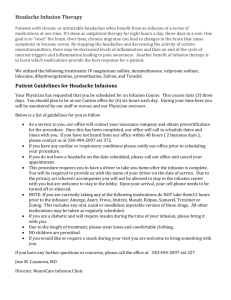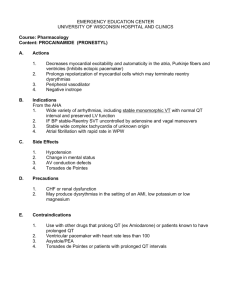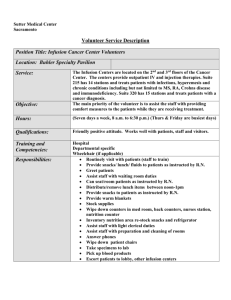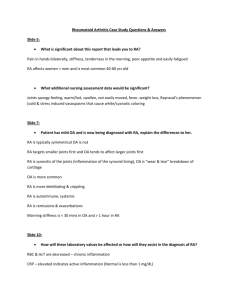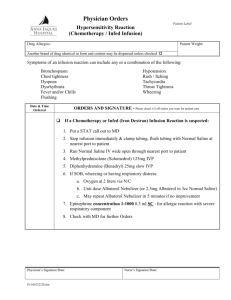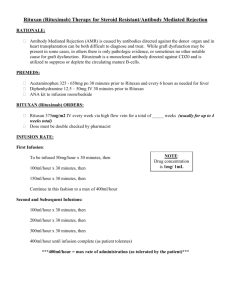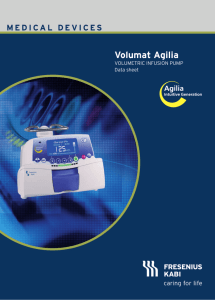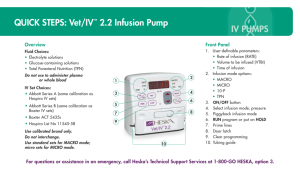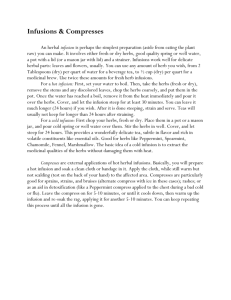Master_thesis_CSF_dynamics
advertisement
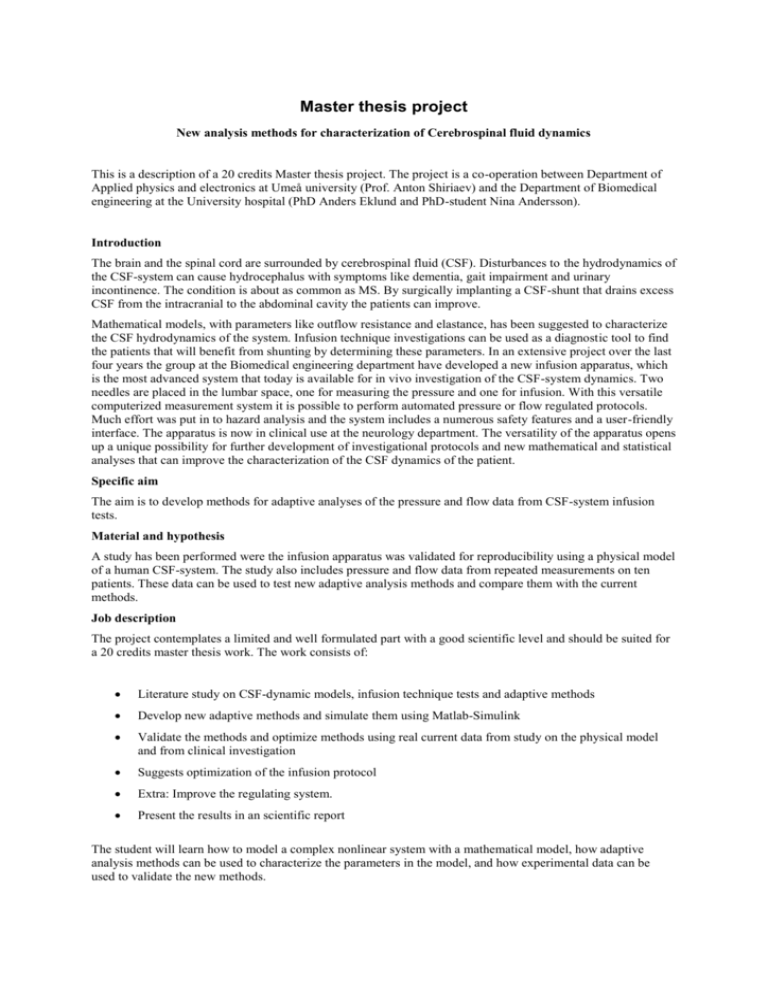
Master thesis project New analysis methods for characterization of Cerebrospinal fluid dynamics This is a description of a 20 credits Master thesis project. The project is a co-operation between Department of Applied physics and electronics at Umeå university (Prof. Anton Shiriaev) and the Department of Biomedical engineering at the University hospital (PhD Anders Eklund and PhD-student Nina Andersson). Introduction The brain and the spinal cord are surrounded by cerebrospinal fluid (CSF). Disturbances to the hydrodynamics of the CSF-system can cause hydrocephalus with symptoms like dementia, gait impairment and urinary incontinence. The condition is about as common as MS. By surgically implanting a CSF-shunt that drains excess CSF from the intracranial to the abdominal cavity the patients can improve. Mathematical models, with parameters like outflow resistance and elastance, has been suggested to characterize the CSF hydrodynamics of the system. Infusion technique investigations can be used as a diagnostic tool to find the patients that will benefit from shunting by determining these parameters. In an extensive project over the last four years the group at the Biomedical engineering department have developed a new infusion apparatus, which is the most advanced system that today is available for in vivo investigation of the CSF-system dynamics. Two needles are placed in the lumbar space, one for measuring the pressure and one for infusion. With this versatile computerized measurement system it is possible to perform automated pressure or flow regulated protocols. Much effort was put in to hazard analysis and the system includes a numerous safety features and a user-friendly interface. The apparatus is now in clinical use at the neurology department. The versatility of the apparatus opens up a unique possibility for further development of investigational protocols and new mathematical and statistical analyses that can improve the characterization of the CSF dynamics of the patient. Specific aim The aim is to develop methods for adaptive analyses of the pressure and flow data from CSF-system infusion tests. Material and hypothesis A study has been performed were the infusion apparatus was validated for reproducibility using a physical model of a human CSF-system. The study also includes pressure and flow data from repeated measurements on ten patients. These data can be used to test new adaptive analysis methods and compare them with the current methods. Job description The project contemplates a limited and well formulated part with a good scientific level and should be suited for a 20 credits master thesis work. The work consists of: Literature study on CSF-dynamic models, infusion technique tests and adaptive methods Develop new adaptive methods and simulate them using Matlab-Simulink Validate the methods and optimize methods using real current data from study on the physical model and from clinical investigation Suggests optimization of the infusion protocol Extra: Improve the regulating system. Present the results in an scientific report The student will learn how to model a complex nonlinear system with a mathematical model, how adaptive analysis methods can be used to characterize the parameters in the model, and how experimental data can be used to validate the new methods.

